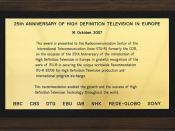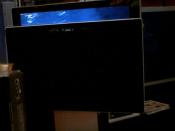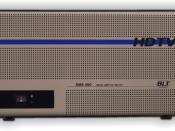It all started when Thomas Edison invented the phonograph. This opened up the idea of receiving and playing professionally produced entertainment at home. As the years went by, there have been many advances in technology and ways to transmit signals through the air waves into people's homes. After all, this is what it's mostly used for, to get programs into people's homes. Whether it be movies, commercials, instructional videos, music, PSA's, news, sports. Whoever creates these programs have the intention of letting somebody else watch them.
Today in America our current broadcast standard is a 525 line/60 field per second based system called the NTSC (National Television systems Committee) . This committee was established to insure order in the development process within the industry that would be accepted by the FCC. This standard was created in the 40's and 50's. Each receiver sold to the American public must conform to received the NTSC signal.
This signal has proved to be a durable way of transmitting information for 50 years. But with today's technology, a new standard has been in the works, HDTV.
In September 1992 NBC's WRC-TV in Washington DC became the first television station in the country to send HDTV signals over the air waves. WRC-TV's general manager then stated, 'With advanced digital high-definition television, viewers will experience unmatched picture quality and superior sound resolution.'
There are many pro's and con's regarding having HDTV as the new standard. Not all broadcasters are interested in HDTV at all. During the transitional period, broadcasters will have channel space to send NTSC signals and HDTV signals simultaneously. At first, the timeline for this to take place was about 7 years down the road. Now experts are saying 15 years is more accurate. Broadcasters are eager to see which of...



Great Info
This essay contained alot of good information related to HDTV. I have been researching this topic for a couple weeks and have found alot of this information for myself. I was brain storming my research and came upon a draught. This essay will help alot with putting my ideas onto paper.
Thanks bnd9791
4 out of 4 people found this comment useful.